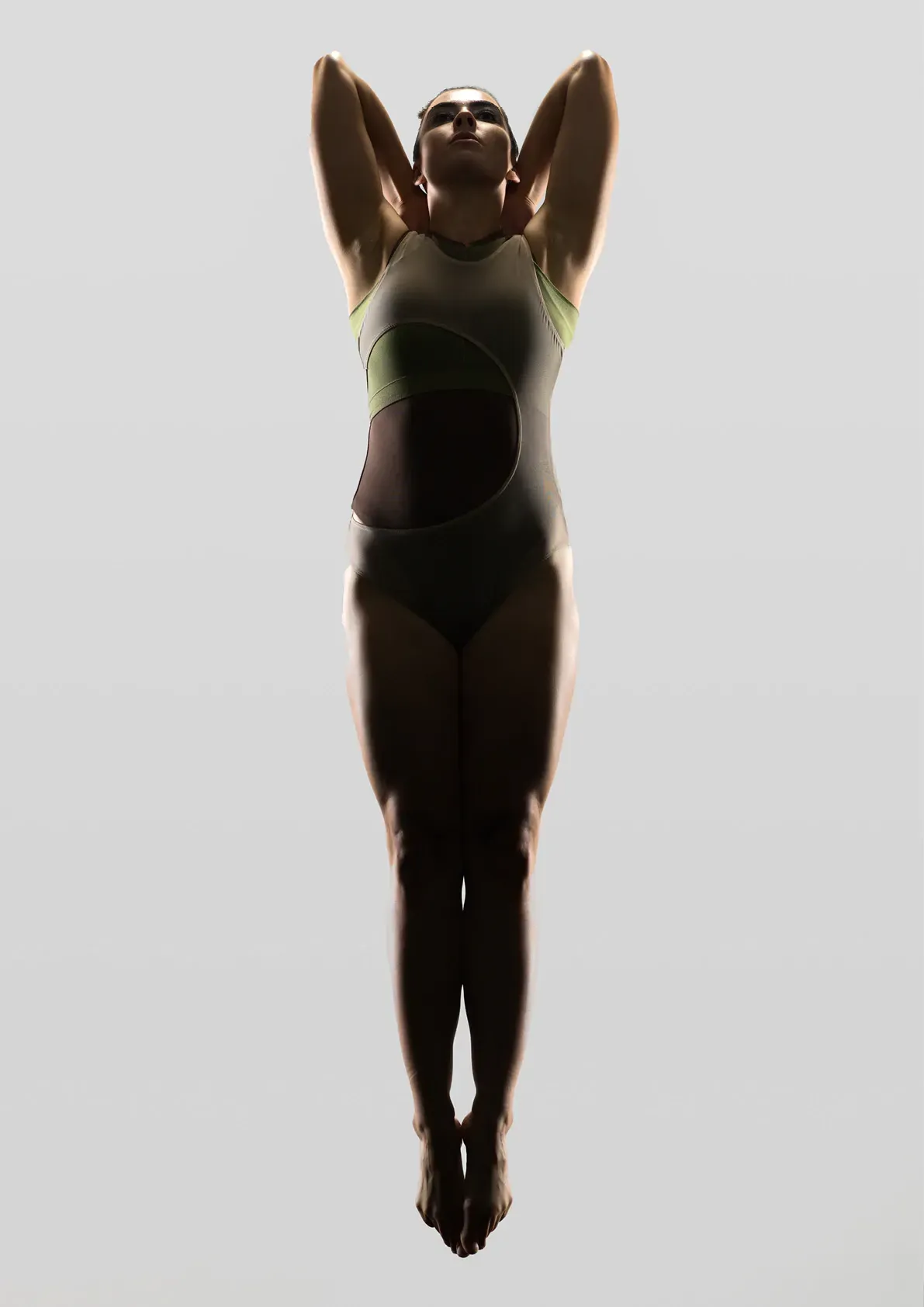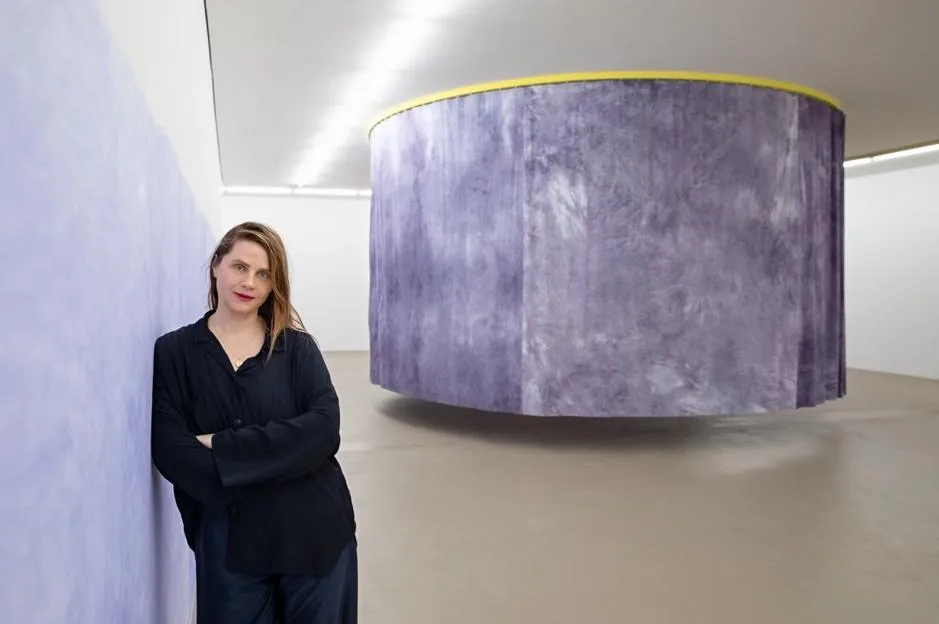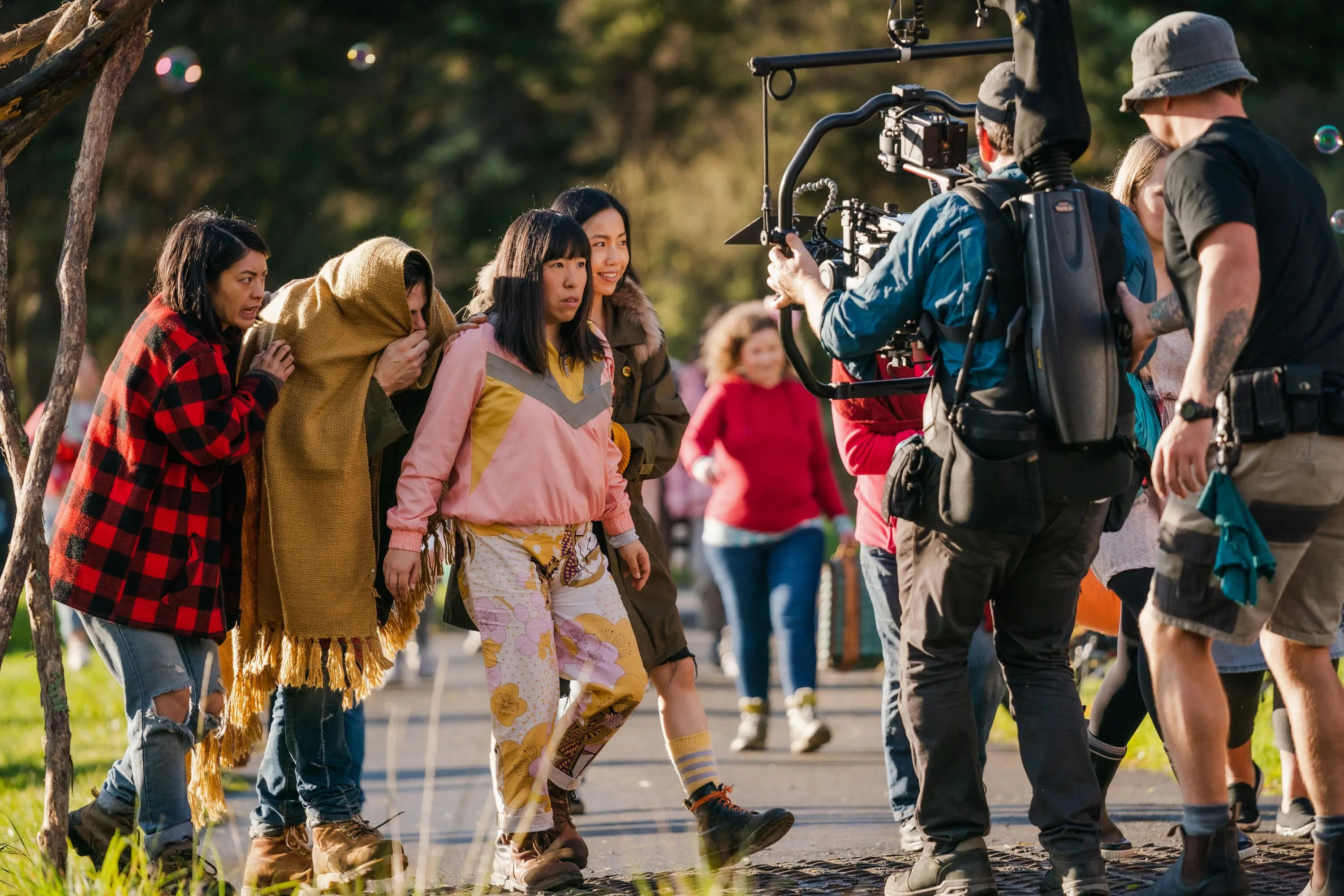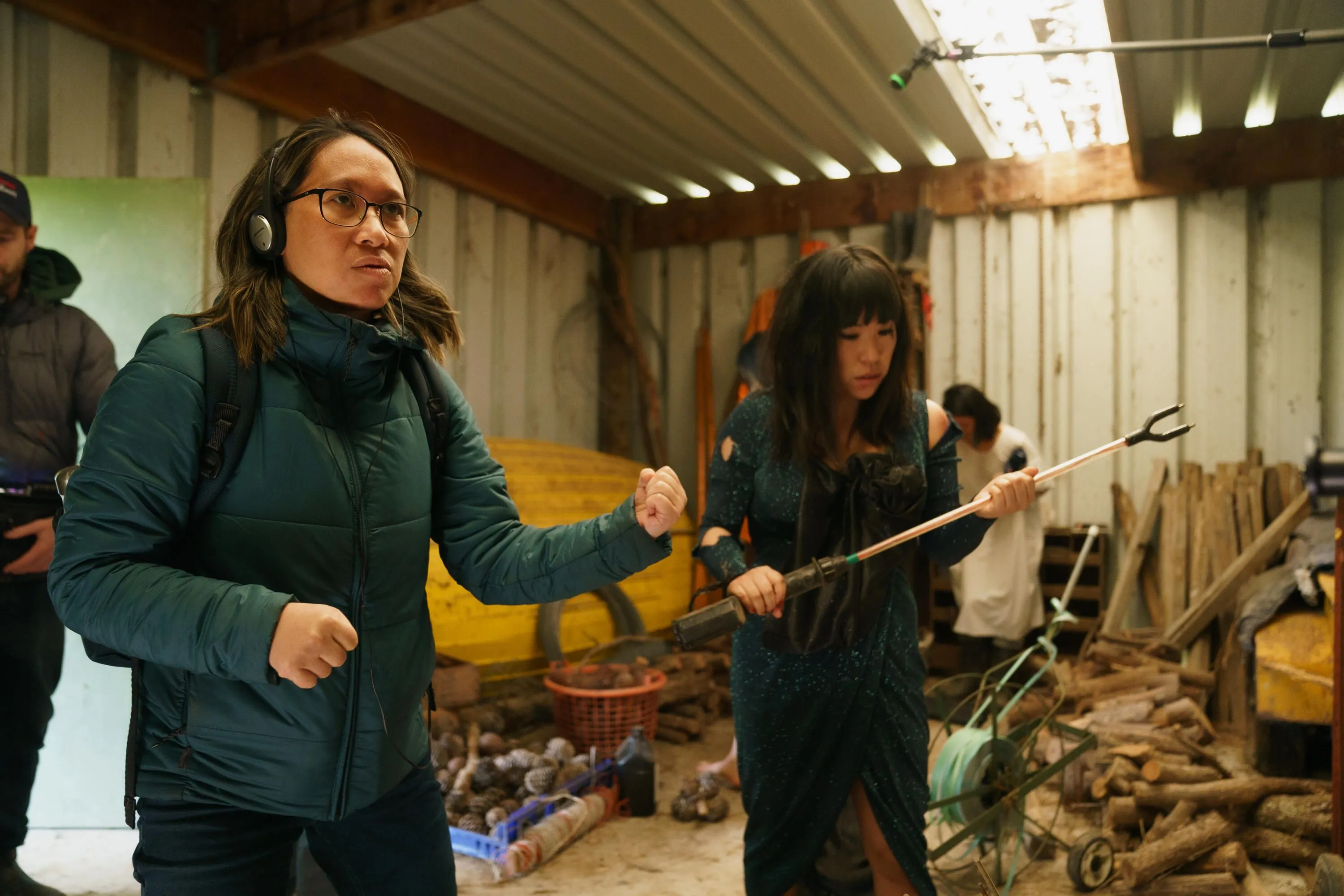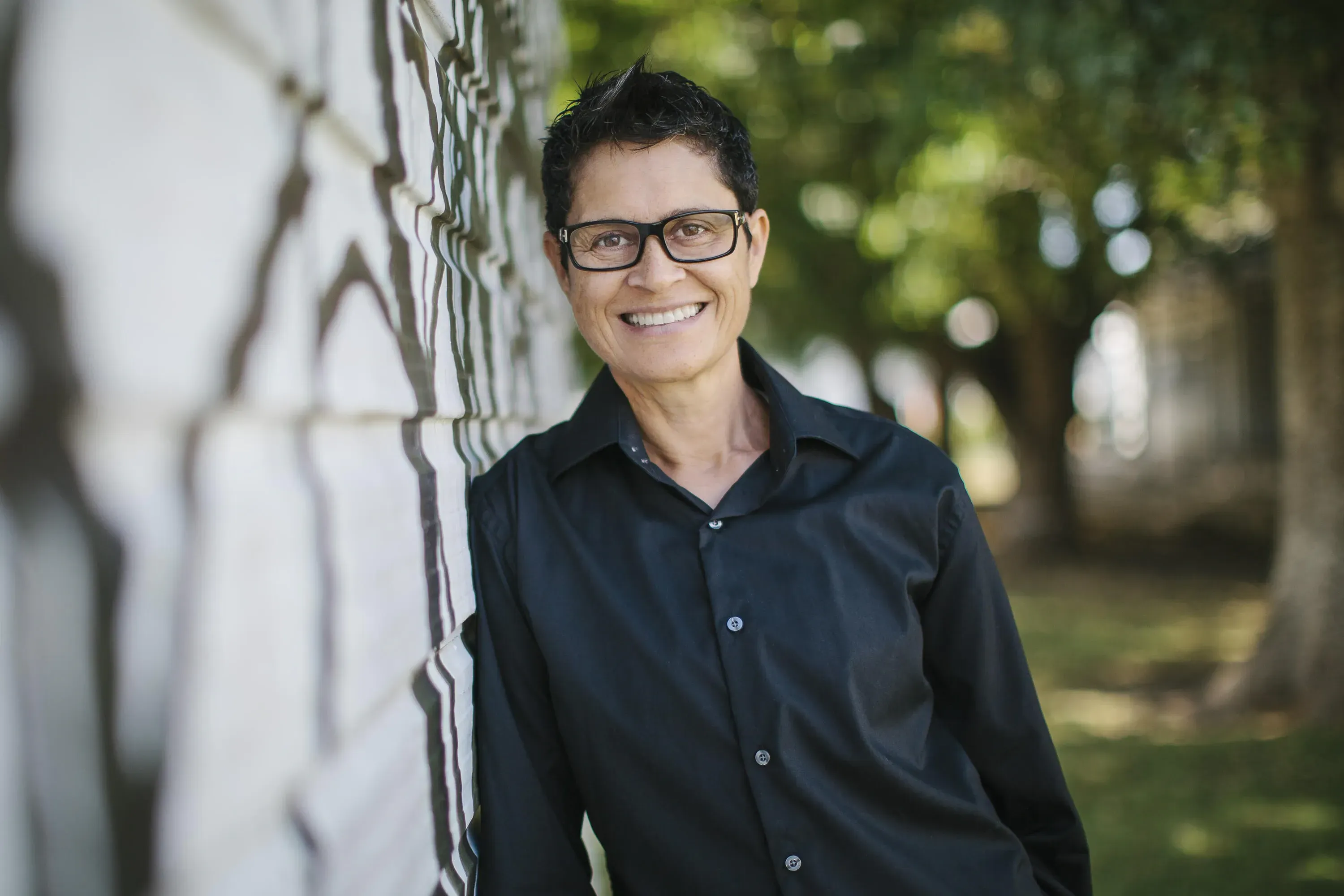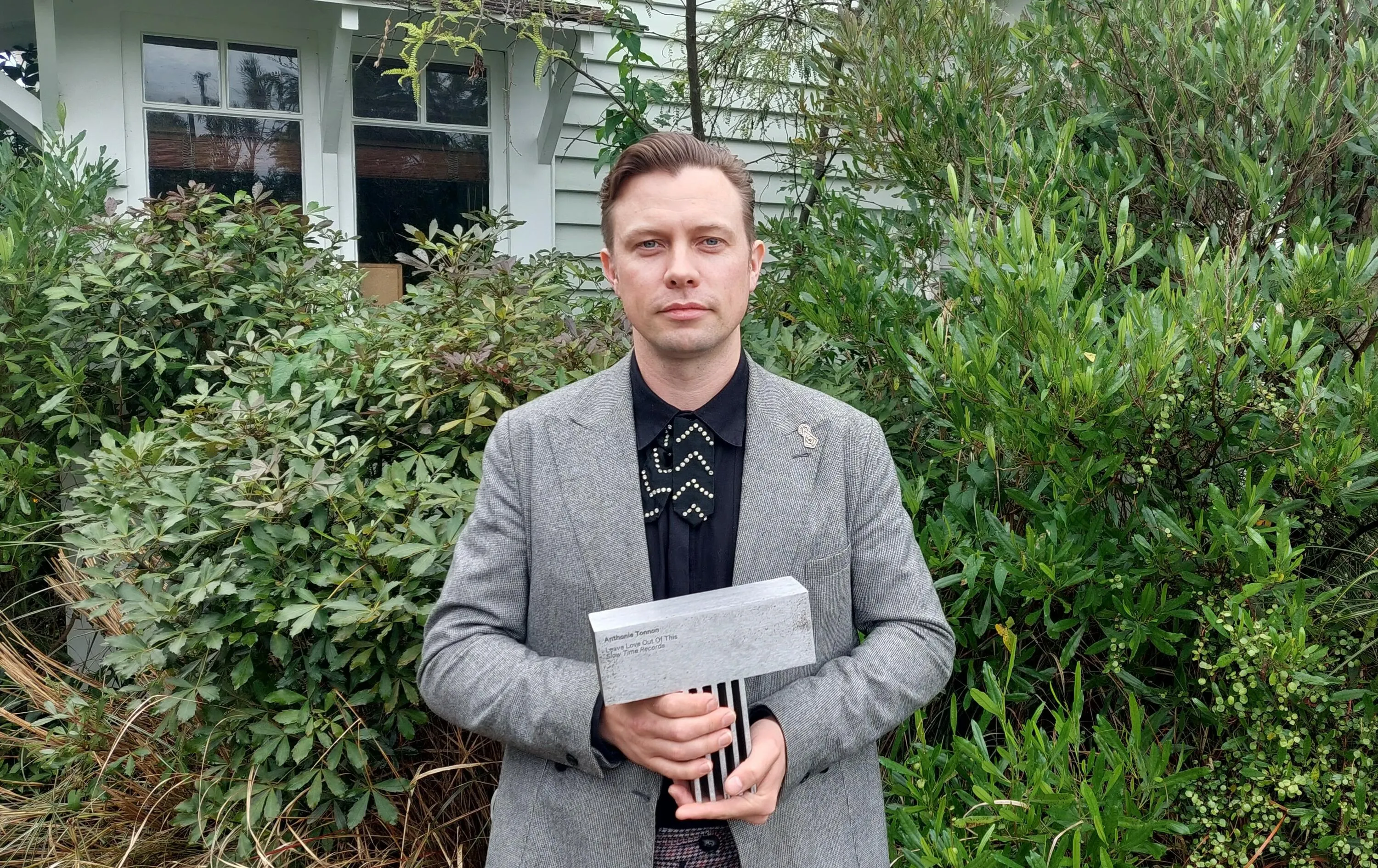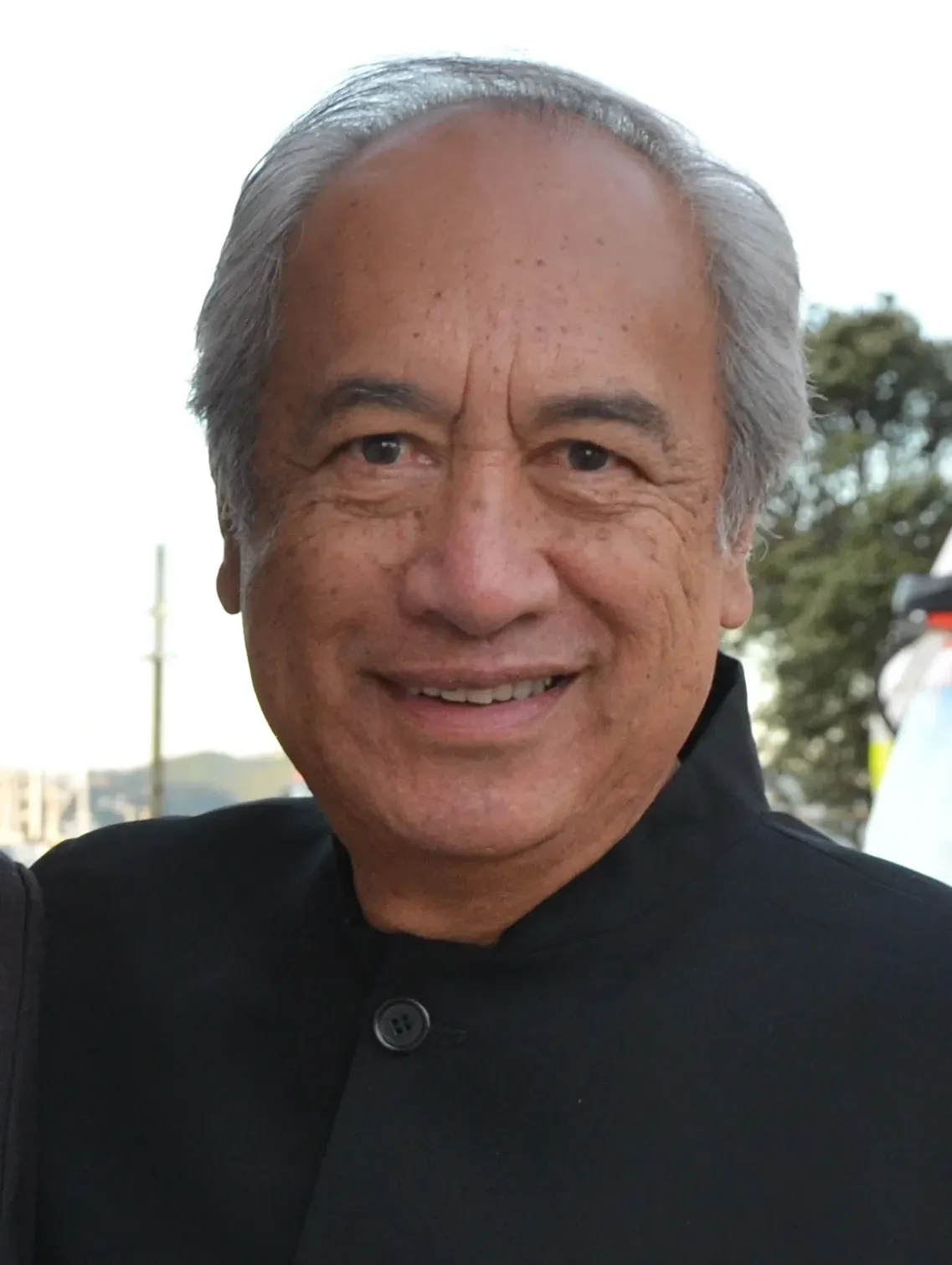'Culture Is On The Budgetary Margins' - Breaking Down Creative NZ's Investment Approach
Written by
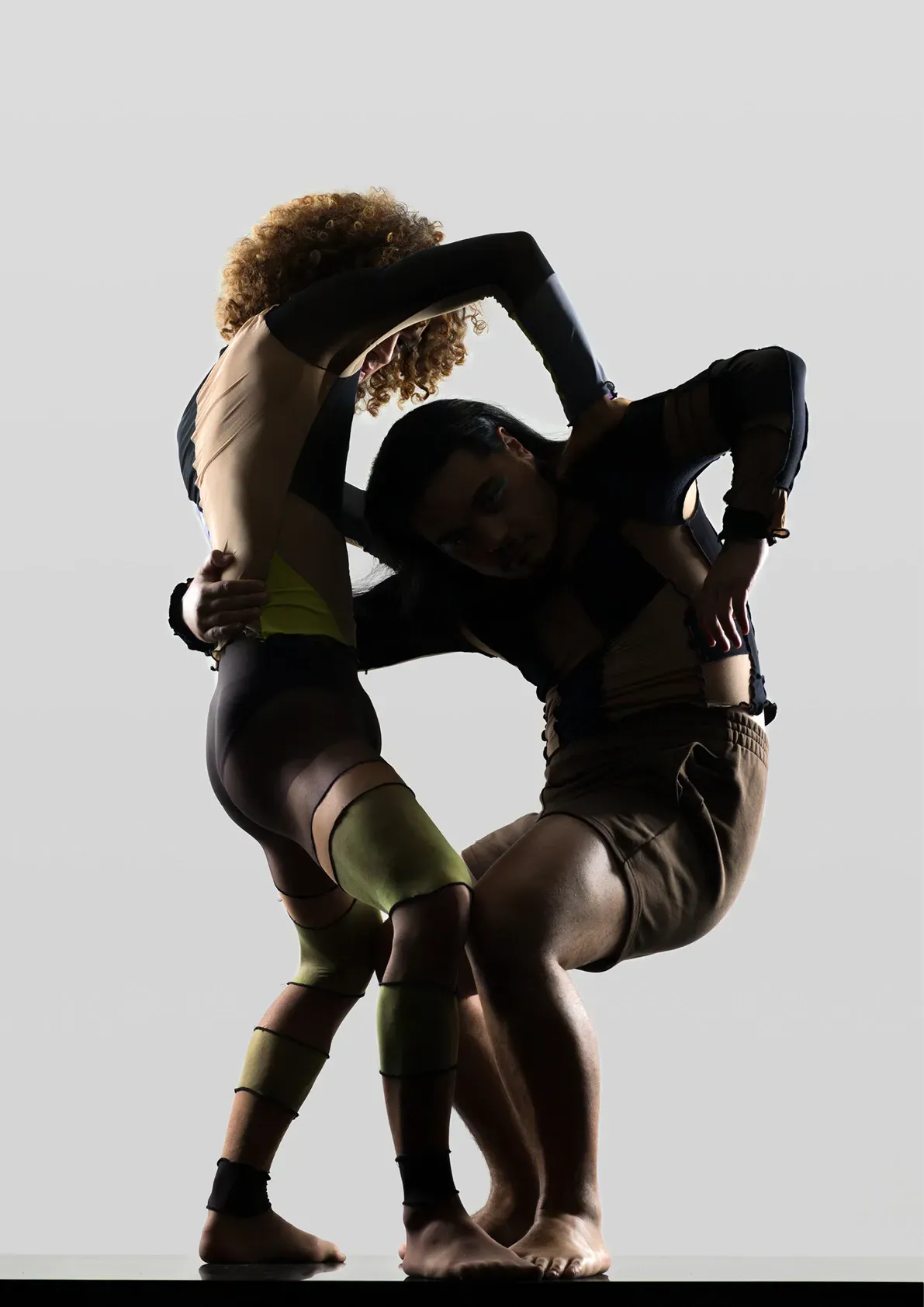
Trilogies are tricky things - designed to be part of a collective but always judged and viewed in each individual form.
This is especially the case until all three can be seen for their collective, intertwined purpose.
That’s where Creative New Zealand (CNZ) finds itself this week, after releasing their investment approach and key funding opportunities for 2022-23 - starting from 18 July.
There are some elements of significance - and plenty that need more fleshing out. That’s because there are two more steps to come that will give more meaning and depth to this announcement.
To back up this information, CNZ will also make public a Statement of Intent in the coming weeks - framed as late June/early July - which will lay out where the focus of their mahi will be over the next four years. What we do know is the upcoming strategic focus areas will be: Resilience; Access, inclusion and equity; and Wellbeing.
Then in August, we will get to the brass tacks when they finalise their budget - waiting on the New Zealand Lottery Grants Board to confirm their funding.
About two thirds of the money invested in CNZ comes from the Lottery Grants, with the rest coming from the Government. CNZ - understandably - are waiting to count those particular chickens once they have hatched but CEO Stephen Wainwright states they expect the contribution “to be a bit better than the initially budgeted $51 million.”
So as you can see - there is much more to come.
But until then, the creative community has been given important clarity on what one of the most important and influential arts driven organisations will be offering for the next year - including CNZ’s Funding and Opportunities schedule.
Money matters
Straight off the bat - there will be less money to play with than in the past three, pandemic dominated financial years.
CNZ drew on its reserves when help was needed the most during that time, but now are returning to the status quo. CNZ are quick to point out that they are investing more than in 2018-19, prior to the arrival of COVID.

Stephen Wainwright. Photo: Supplied.
“One of the consequences of the phase we’re in, as you may have seen in the Government’s recent Budget, is that the funding lines around one-off COVID support are being kept as just that; one-off and temporary,” Wainwright concedes.
But there is certainly an underlying tone of frustration as the organisation looks to advocate for more money from Government, where Wainwright declares “culture is on the budgetary margins.”
He expands that by CNZ’s reckoning “the whole vote for Arts, Culture and Heritage is around 4 percent of the Crown’s core expenses of $158.5 billion. To zoom in with another turn of the microscope, the $16.689 million baseline investment we receive from the Crown through Vote ACH is about 0.01 percent, or one one-hundredth of one percent, of the Crown’s core expenses.
“In 2022, we’re finding a very challenging gap between our aspirations for the arts and the public resources we have available to do the job,” he continues, while acknowledging a separate $4 millon supplied to support the Minister’s Pasifika Festivals Initiative.
“The predictability of this Crown investment is great; of course, we’re disappointed that we weren’t successful in attracting positive attention in the May 2022 Budget as others in the portfolio did. We’ll be looking to understand why this is, as we’re acutely aware that the resources we have to support the arts are a key driver of the public value we can contribute via the arts community.”
Changes of note
So what’s actually changing with CNZ - and more specifically for the creative community - in the coming year from yesterday’s announcement?
In the coming year, there will be four Arts Grants rounds for applications between $5,000 to $75,000 that will close after 250 applications have been submitted. That’s two less arts grant rounds than the previous financial year, but with an extra 25 applications allowed before the cut off. That means that potential applications received for Arts Grants over the next year will reduce from 1350 to 1000.
That’s separate to the Annual Arts Grants for those with projects over a longer timeframe, with applications between $75,000-$150,000 which will be open on 18 July and closes on 5 August - so a small but important window for those who can meet the specific criteria.
The Toi Ake Mātauranga Māori Te Awe Kōtuku Fund - open to marae, hapū, iwi, whakapapa-based rōpū and mātāwaka - will have one funding round in the next financial year as well, that will open 22 August. Changes will also be made to Toi Tipu Toi Rea, CNZ’s programme to support emerging Māori artists or practitioners at an early stage of their career - the details of which are yet to be released.
There is certainly a renewed focus on independent practitioners, with more money and focus being placed there. CNZ notes that they have “shifted the focus of the Capability Building programme from organisational development to building resilience in the sector for individual practitioners.”
independent reaction
This will be welcomed as - rightly or wrongly - there has long been the perception from many in the creative community that CNZ just looks after those at the top of the tree when it comes to arts organisations.
Sticking with the trilogy theme, The Lowdown approached some outspoken and influential trios who have been standing up for individual creatives in the past 12 months to get their immediate reaction to this first installment of CNZ announcements..
Sam Snedden, Alice Canton and Johanna Cosgrove are strong advocates for officialdom to do more - driving last year’s independent artists survey which provided some startling information, specifically around financial support and literacy.
Sneddon told The Lowdown “I think it's great that there will be increased opportunities for individuals to develop, but I'm going to wait to see the details before I get too excited.
“What I'm really hoping is that there will be more opportunities for people to learn and grow collectively, as this will make any cash that there is stretch further. I'd also like to see CNZ using their influence on training institutions to help practitioners to build their professional tool kit before they enter the industry, that's something that they could advocate for alongside MCH (Ministry of Culture and Heritage) to put pressure on MOE (Ministry of Education).”
The creatives driving the Equity for Artists group, Judy Darragh, Dane Mitchell and Reuben Paterson told The Lowdown “this redirection of funding to artists is encouraging. Direct funding helps provide livelihoods for artists and also benefits the wider arts economy through fabricators, framers and art material suppliers.
“Although the same systems remain in place for processing and assessing, it would be good to see some conversation around other models of funding, for example a universal income for arts makers.
“Like Stephen Wainwright, we too are disappointed CNZ wasn’t successful in attracting positive attention in May’s Budget as others in the portfolio did. Stronger central government advocacy for the visual arts is paramount right now.
“We are also curious to know why Aotearoa New Zealand’s national participation in the Venice Biennale 2023 is not mentioned, as this would certainly be funded during this timeframe.” (UPDATED: CNZ has announced the Arts Council of New Zealand is commissioning a review before committing to ongoing participation into the Venice Biennale for 2024 and beyond.)
Other things to put in the diary are the confirmed grants and awards for 2022-23.
Along with CNZ’s annual Ngā Taonga Toi a Te Waka Toi, the Arts Pasifika Awards and the Prime Minister’s Awards for Literary Achievement - all of which are currently accepting nominations for this year’s editions - the following will be locked in and offered around specific Arts Grants windows:
- Michael King Writer's Fellowship
- Berlin Writer’s Residency
- Tup Lang Choreographic Award
- Todd New Writer’s Bursary
- Louis Johnson New Writer’s Bursary
- Edwin Carr Foundation Scholarship and Jack McGill Music Scholarship
Wainright optimistically points out “it’s been evident that there’s some pent-up demand for engaging with the arts,” but acknowledges the creative community’s still needing plenty of support after the emotionally sapping last few years.
“As a sector, we’ve learnt some new things, we’re pretty tired, but we’re doing our best to get on with what it is we’re here to do.”
The Big Idea will keep you informed on the coming episodes of the CNZ information trilogy. Coming soon to a computer or device near you….
Creamerie rises to the top

On the set of Creamerie. Photo: Supplied.
Speaking of funding opportunities, there is major cause for celebration for a group of TV and filmmaking Aotearoa creatives, cashing in on the final round of Te Puna Kairangi – Premium Productions for International Audiences Fund.
Of the 20 projects that applied, nine have received funding.
Administered by the New Zealand Film Commission (NZFC), the $25 million investment is the final instalment from the $50m Fund, set up to support the local production sector’s pandemic recovery. On top of that, six of those projects have been backed by a further $4.8 million ($800,000 each) by NZ on Air for meeting their funding requirements as well.
Among them, the green light has been given for a second season of the wonderfully creative dark comedy Creamerie - a show that’s been a hit locally and has picked up great international interest, including being part of international streaming giant Hulu’s stable.
One of the producers and stars, Perlina Lau told The Lowdown “Without the funding we wouldn't be able to make Season 2 - to put it simply! We were incredibly hopeful but you never want to presume so we are thrilled with the support.
“We can now turn our ideas we've had for a while into script reality! We left the first season on such a big cliff-hanger and we feel like there are so many questions to be answered. We would have been gutted to just end it there.
“We've been working on ideas in development so now we can happily try and fit them all into a second season.”

On the set of Creamerie. Photo: Supplied.
Creamerie is no overnight success, it’s been almost a decade in the making for Lau and her other long-time collaborators, who are busy both in front of and behind the screen. They’ve toiled away in the journey from self-funding through to being in top echelon on Aotearoa TV production.
“JJ Fong, Ally Xue and I met during a theatre show for kids back in 2011. We didn't feel there were roles available which reflected us, on screen and in theatre, so we got together to brainstorm. We approached Roseanne Liang who is a master of all. We decided to film videos for YouTube because you could make whatever you wanted and at the time, more importantly, in our own time. Being online gave us so much freedom to explore so many different ideas within Flat3 and Friday Night Bites and hone our style and comedy.
“We realised we had great chemistry on-screen and as a group - we worked extremely well together. We decided at the beginning that if we weren't having a good time - it was probably time to stop. So far....so good!
“We've been able to work with SO many New Zealand creatives along the way so while it's been a long time, it felt like the right time to make the TV show. I think we had time to develop confidence in ourselves too, to pitch a bigger concept.”
As for the success of the show, that is based on men being wiped out by a virus, Lau suggests timing played a big part. "We wanted to comment and address things that were happening around the world - lot of laws around the world were revoking women's rights, Trump was in power - and turn that feeling of hopelessness we had into something where you could talk about it but still have a laugh.
“In recent years too - New Zealand artists have paved the way overseas and the UK and the US love Kiwi humour. Of course, we did not anticipate a real pandemic happening at the same time, but that added another layer of relatability for audiences. It was suddenly something we didn't have to explain and people would understand from real-life experience. That was pretty surreal.
“As for getting picked up by Hulu - this was very exciting. We were so inspired by The Handmaid's Tale so to be picked up by the distributor who put that show out felt really bloody cool.”
The first season of the show provided work and creative opportunities for around 200 people - including pre and post production. Lau reveals development has already started for the new season, with the funding meaning they can finish the script and get on to production with an eye to airing the series in 2023.
Others to receive support from the latest round of the Premium Productions for International Audiences Fund include Peter Salmon and Helen Bowden’s drama series After The Party, Vendetta Productions’ feature film Babylon that will feature strong te reo Māori content, the prolific Mukpuddy’s latest animated series Badjelly, Dark City – The Cleaner, a Dexter-esque crime thriller series from producers John Barnett and Chloe Smith, three part documentary series Escaping Utopia, Hollywood acclaimed New Zealand director Andrew Niccol’s family fantasy feature I,Object, drama series Madame Mom about a small-town New Zealand brothel and a second season of The Panthers, based on the Polynesian Panthers movement.
Mladen Ivancic – acting CEO of NZFC says across three production funding rounds Te Puna Kairangi has supported a total of 16 productions. “These projects represent an anticipated collective spend of over $154 million in a range of locations around the country, with an estimated spend on local jobs of over $90 million. International investment in these projects is over $51 million.”
Busy times

Witi Ihimeara. Photo: Supplied.
It’s all go for the New Zealand Society of Authors right now.
They’ve just named one of the most esteemed writers in Aotearoa, Witi Ihimaera as their 2022-2023 President of Honour. It’s a position that is bestowed on a senior writer and long-serving NZSA member in recognition of their contribution to writing and writers and the literary arts sector.
His resume speaks for itself - three-time winner of the Wattie/Montana Book of the Year award, a Katherine Mansfield fellow, and the first Māori writer to be published in Aotearoa. 50 years since his first book was published, Ihimaera launches his children’s picture book, The Astromancer, next week.
Ihimaera says “As a Maori writer, I have a particular kaupapa to ensure Waitangi principles are sustained within this context. Nor can I forget that whenever a reader goes into a bookshop and buys a New Zealand book with their hard-earned income that they are upholding literacy goals in their own households. Māori say 'Ka ora pea i a koe, ka ora koe ka au,' Perhaps you exist because of me, I certainly exist because of you.”
Ihimaera is a former winner of the NZSA Heritage Book Awards, which have just opened for nominations for 2022. Poetry is a new category this year, joining Non-Fiction, Fiction, Te Reo Māori (both bilingual and Te Reo) and Children’s Books.
On top of that, NZSA - in partnership with Copyright Licensing New Zealand - has also this week opened the most sought after non-fiction prizes in the country - the $25,000 Writers’ Award.
Any writers looking to devote time to a specific non-fiction - including educational - project are encouraged to apply before the 29 June cut off.
And next week, applications for the NZSA/CLNZ research grants close - meaning there’s still time to put your project forward for a slice of the $20,000 worth of support. The Big Idea has a story up on the impact the grants have made on previous recipients.
Exporting Cole

Gina Cole. Photo: Kelly Newland.
After having closed borders for so long, heading across the ditch has never seemed so attractive.
And for New Zealand author and lawyer Gina Cole, it’s a gateway to an incredible opportunity, announced as the recipient of the inaugural 2022 International Residency with Australia.
A partnership between the Michael King Writers Centre and Australian equivalent, Varuna, The National Writers’ House in Katoomba, New South Wales - a writer from each country will visit the other during October.
For Cole, that comes with return flights to Sydney, four weeks accommodation and meals at Varuna, a NZ$5,000 stipend and the opportunity to appear at the Blue Mountains Writers’ Festival.
Cole - who won the Best First Fiction Book award at the 2017 Ockhams, told The Lowdown “this residency means a lot to me. It’s an honour and a privilege to be chosen.
“It’s a fantastic opportunity to be able to attend an international residency once again and I’m so grateful to be able to head across the Tasman for this period of time.
The gift of time is so valuable - which is what residencies offer a writer - time and the chance to be able to really focus on a project, and to do so in the company of other writers in a place dedicated to supporting writers is just wonderful.”
Cole, who has a Master’s degree in Creative Writing from the University of Auckland and a PhD in Creative Writing from Massey University on the topic of Indigenous science fiction and Pasifikafuturism, adds:
“I’m also really looking forward to connecting with other Indigenous and Pasifika writers during the residency. I’m also looking forward to attending the Blue Mountains Writers festival. I’ve never been before. It will be a great place to promote my new book Na Viro which will be launched soon.”
In return, Australian writer Kate Mildenhall will spend October in Auckland at the Michael King Writers Centre.
Tonnon of talent

Anthonie Tonnon with his Taite Music Prize. Photo: Karlya Smith.
Of the awards available to our musicians - the Taite Prize is put on a high pedestal.
Rather than be judged on commercial success or whether or not it went viral, the Taite Music Prize exists to recognise outstanding creativity for an entire collection of music contained on one album.
Anthonie Tonnon has been crowned this year’s winner for his album Leave Love Out Of This, joining the likes of Aldous Harding, Troy Kingi, Reb Fountain and Avantdale Bowling Club in having their artistry honoured.
He told The Lowdown "the nomination, and the win, means a lot - not so much as a recognition for various sparks of creativity, but because of the people, the mahi, and the process we followed to turn those sparks into something as realised as we could make.
“Our core team has now been working together for a decade, so there is a lot of mutual understanding and shared experience that we could draw on, even as the demands on our time from other projects became greater.
“We used a performance-centric process to hone the songs. Often, after previous albums, I've found a way to improve a song after it's already been recorded. So for this album, Jonathan and I decided I would go out and tour the songs, tweak them until audiences responded really well to them, and then record them.
“It all took time, but I knew that we'd left nothing on the table and made this record as good as it could be. It's satisfying to know that people can hear that."
A finalist in the most recent APRA Silver Scrolls, Tonnon’s title also comes with a cash prize of $12,500.
The Auckland Live Best Independent Debut went to Jazmine Mary for their debut album The Licking of a Tangerine, while the NZ Classic Record award was presented to producer Alan Jansson.
A judge's special commendation was also given to Stuff Alison Mau for her important mahi uncovering the dark underbelly of Aotearoa’s music industry practices and sexual harm prevention.
Back in live spaces

KAHA. Photo: Supplied.
It’s wonderful to see some of the companies that have been forced away from the spotlight returning to their natural habitiat.
The acclaimed Atamira Dance Company is one of those, who haven’t performed live since presenting Te Wheke in August 2021 in Whangārei - four days before Omicron hit and Auckland went into a Level 4 Lockdown.
They are finally set to return to a “live space” at Q Theatre next month, with the announcement of KAHA – Tripleboost, comprised of a solo performance from Sean MacDonald, described as painting a self-portrait through physical movement, five short premiere dance pieces by five emerging Māori choreographers titled KAHA and a virtual reality film experience called TOMO.
Highly regarded Artistic Director Jack Gray enthuses “we stand behind our young artists, many of whom transitioned between tertiary and professional dance career pathways during COVID-19.
“Atamira plants the seeds for choreographic visionaries of the future, continuing a great tradition of our company which fosters the many sides of a dance artist to excel in the world. It is difficult as a freelancer to sustain a practice and we are so happy to provide the stability and assurance that their voice matters!”
Creative appointments

Ruth Buchanan with her work Spiral Time in Kunstmuseum Basel | Gegenwart. Photo: Xandra M. Linsin.
For just the second time since it began in 1986, Artspace Aotearoa will be led by a practising artist.
Former Walters Prize winner Ruth Buchanan will take over as Kaitohu Director in November, as she returns home after more than a decade working in Berlin.
Buchanan (Taranaki, Te Atiawa, Pākehā) has been involved in the leadership, development, and production of over one hundred exhibitions, public programmes, and publications. Earlier this year she launched Heute Nacht geträumt [I dreamt last night], a museum-wide exhibition at Switzerland’s Kunstmuseum Basel | Gegenwart.
She states “drawing on shifts taking place across the global gallery and museum landscape, I’m looking forward to leading the team to present exhibitions and positions that promote emancipatory world views. Key to this is the ongoing development of expressions of Te Tiriti o Waitangi and its capacity to contribute to conversations in Aotearoa and further afield.
“As an artist taking up this role, I’m excited to underscore Artspace Aotearoa’s founding commitment to forging an ‘otherwise’ through timely programming that insists on art’s fundamental role in narrating, problematising and understanding the world in which we live, together.”
A new appointment too for SOUNZ Centre for New Zealand Music, with Tau’ili’ili Alpha Maiava revealed as the Moana Pacific Musics Specialist.
Maiava is fresh off his success at the prestigious New York Festivals Radio Awards as host and co-producer of the Gold-winning podcast series Sounds of the Moana. That accolade sits along side his three international music awards and many roles as a TV and radio presenter.
He is tasked with implementing the SOUNZ Moana Pacific Peoples Musics Strategy, which will be the first nationwide strategy for the musics of the Moana Pacific peoples in Aotearoa.
Maiava declares “it gives me and my aiga the greatest of pleasure and honour, of contributing to tomorrow’s leaders via this humble opportunity,” following on with a samoan alaga’upu/proverb - “A fa’amaoni i mea iti, ta te pulea mea e tele; remain hopeful in the grouping of tiny pebbles, for it will collectively form the cornerstone of a better tomorrow.”
